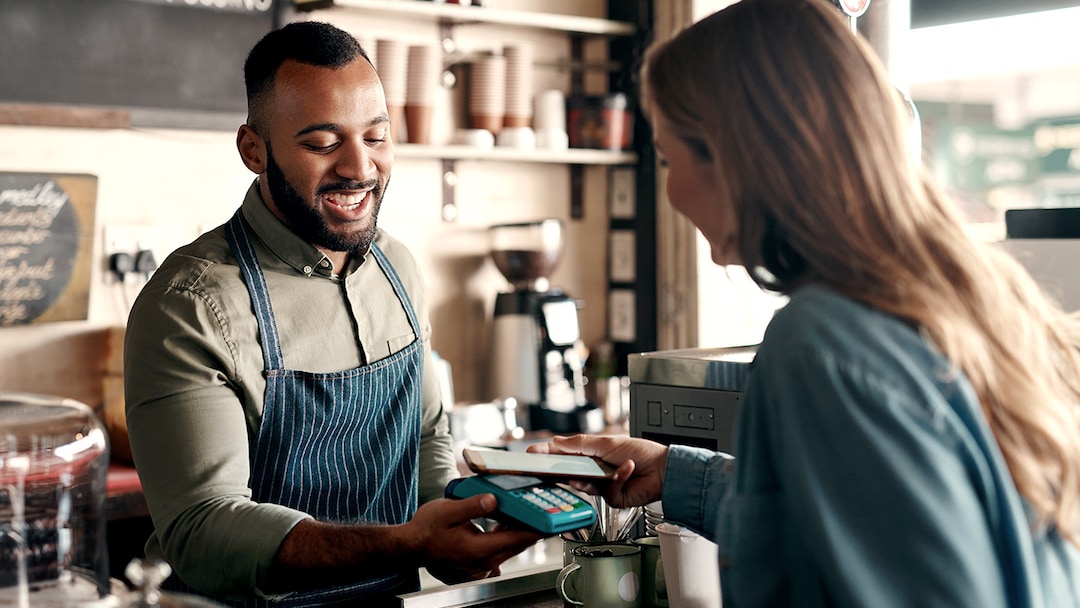Pros and cons of digital payments

Quick insights
- Digital payments may offer perks over traditional payments such as convenience, speed and the ability to track spending in real time.
- Digital payments may have security features like encryption and two-factor authentication to help keep payment information secure.
- Before initiating a digital payment, it can be helpful to consider fees, security and the reliability of your internet connection.
Digital payments are growing in popularity with each passing year. Digital payments can encompass a wide variety of payment methods and can be initiated by using a credit card, digital wallet or bank account online. With so many ways to make digital payments, let’s explore some of the pros and cons of electronic payments.
Understanding digital payments
Digital payments are a way for you to pay for goods or services electronically, without ever having to pull cash—or sometimes even a card—out of your wallet. And they are becoming an increasingly more common form of payment. Technology advancements and the growth of e-commerce sites have contributed to the popularity of digital payments. The COVID-19 pandemic likely sped up their adoption as well.
Types of digital payments
There is more than one way to pay digitally. Here are a few digital payment methods available:
- Mobile payments: Mobile payments are transactions made through a mobile device, such as a smartphone or tablet, using apps or digital wallets.
- Online bank transfers: Online bank transfers are electronic transactions that move money from one bank account to another via the internet. They use a bank's online platform or mobile app to initiate the transfer, which can include ACH transfers, wire transfers and peer-to-peer payments.
- Contactless payments: Contactless payments are transactions made by tapping a card, smartphone or wearable device near a compatible point-of-sale terminal.
There are pros and cons to using digital payments. Let’s explore both.
Pros of digital payments
There can be some plus sides to using digital payments over more traditional payment methods. They include:
- Convenience: Digital payments likely allow for quick and easy transactions without the need for physical cash or checks. Some may find this to be a simpler way to make a purchase both online and in-store.
- Speed: Transactions are processed almost instantly, reducing the time spent waiting for payments to clear or for a cashier to make change.
- Security: Many digital payment methods offer security features including encryption, tokenization or biometric authentication to help keep your payment information safe. These security measures can help protect against fraud and unauthorized access to your accounts.
- Record keeping: Digital payments generate electronic records of transactions, making it possible to track your spending and bank balance in real time.
- Global reach: Digital payments are widely accepted across the globe. This helps make it easier to facilitate international transactions, allowing users to send and receive money across borders quickly and efficiently.
Considerations when making digital payments
Digital payments may not always be the best way to pay for something. When initiating or making digital payments, you may want to consider the following:
- Security risks: Despite advanced security measures, digital payments could be vulnerable to cyberattacks, hacking and phishing scams, which could include financial loss and identity theft.
- Technical issues: Dependence on digital technology means that system outages, software glitches or connectivity problems could potentially disrupt your transactions.
- Fees: Some digital payment services charge transaction fees or service fees. Check for any associated fees before making a transaction.
- Acceptance: Not all merchants or service providers accept digital payments. This can limit their usability in certain situations or geographic locations. It can be helpful to have a second payment option available when possible.
- Consumer protections: As a consumer, there may be some situations where your finances are not protected when making transactions. For example, some peer-to-peer payment apps don’t allow you to cancel transactions if you’ve entered the wrong payee information.
- Spending limits: Contactless payments may be subject to a transaction limit. Some financial institutions can put a cap on the amount of money you can spend during a contactless payment transaction.
How digital payments work
Digital payments allow you to pay for goods and services without having to fetch your card or cash from your wallet. Most digital payments require initiation, authentication, authorization and processing to complete your transaction. Most of these steps happen near instantly because digital payments can be processed quickly by most merchants and banks.
In summary
Digital payments are playing an increasing role in today's financial landscape. That may be due to the perks of using digital payments, which can include speed, convenience and security, to name a few. When using digital payment methods, you may want to consider any associated fees and your internet connection before initiating a digital payment. While digital payments can offer efficiency, they should be used with a clear understanding of the associated risks and safeguards.



